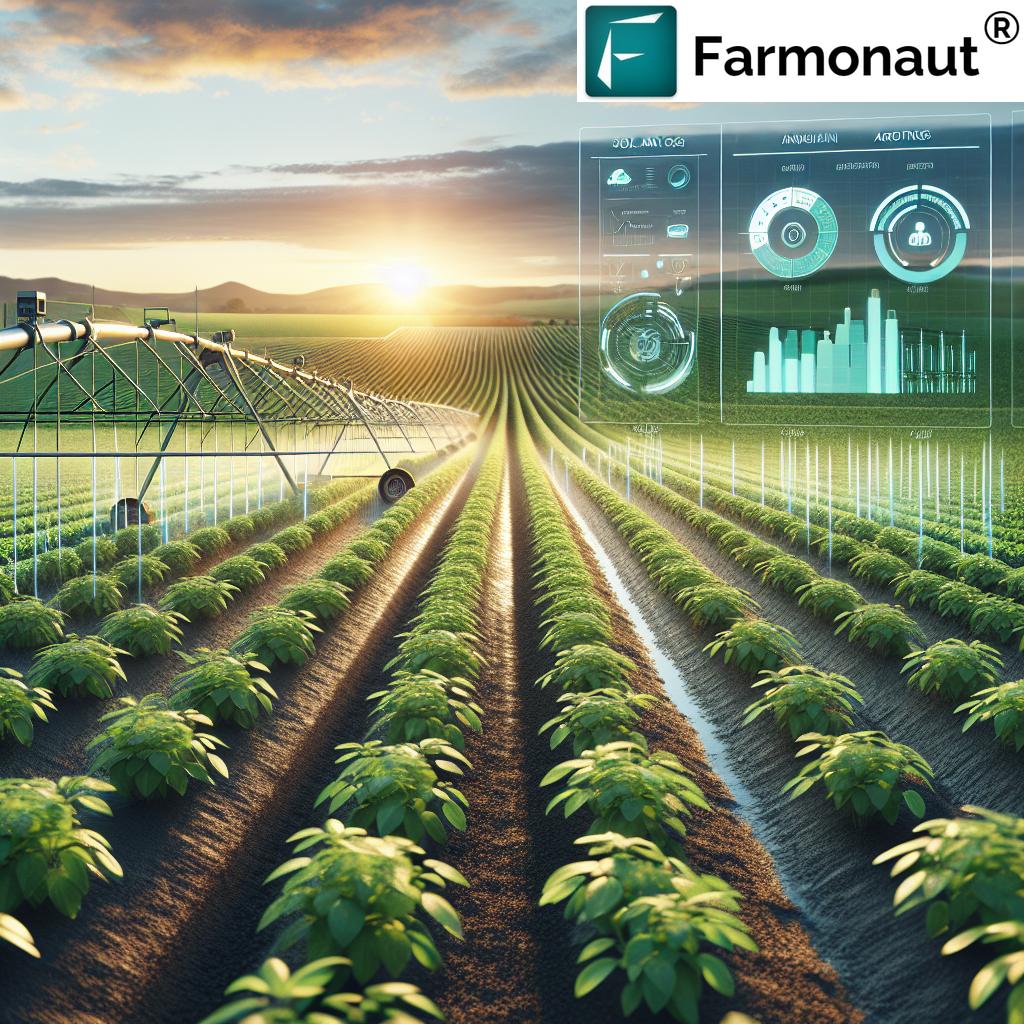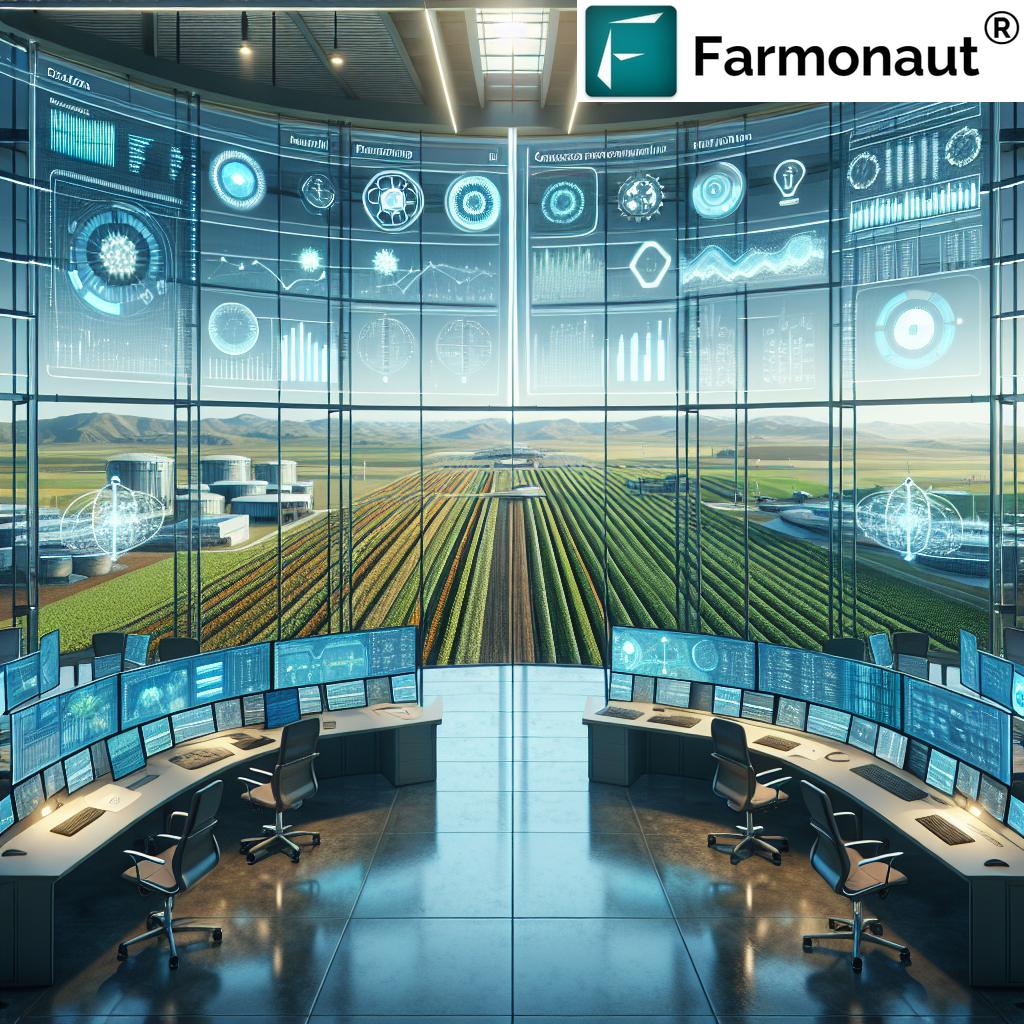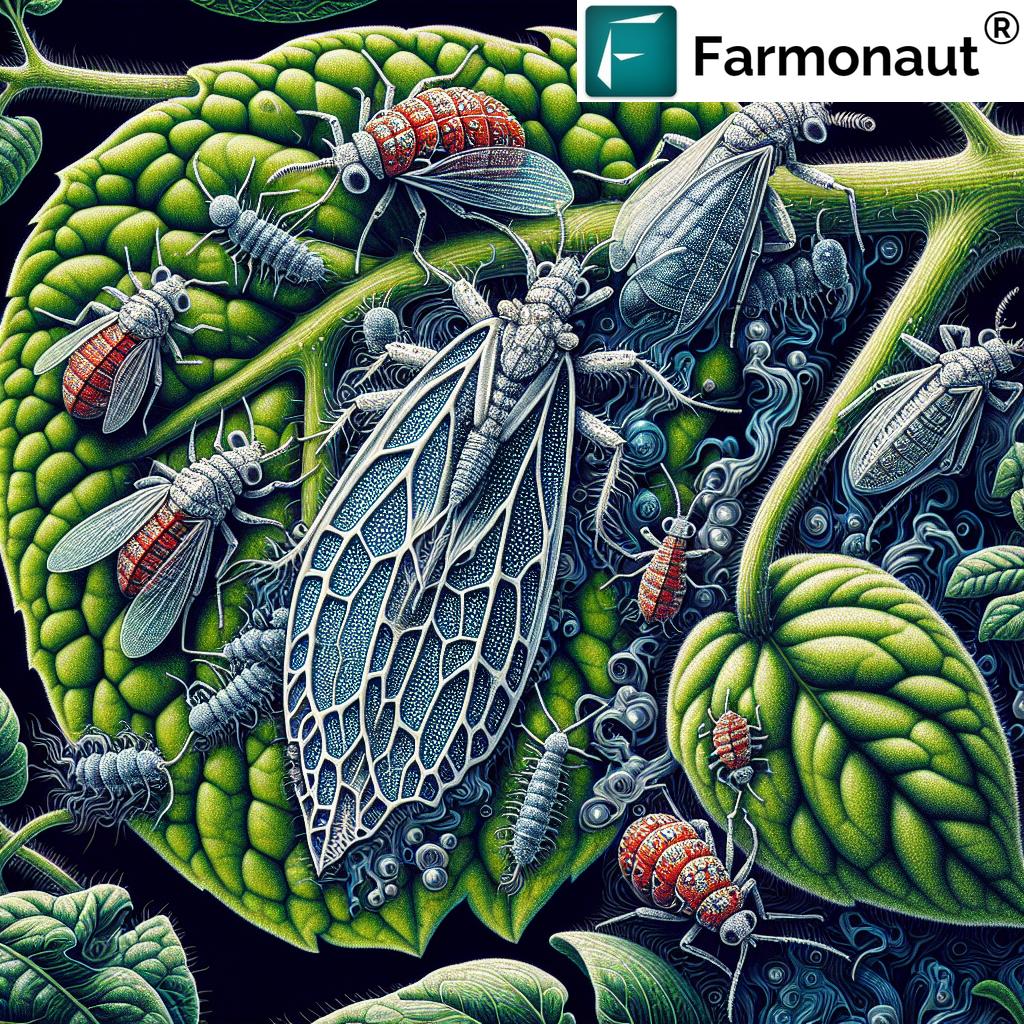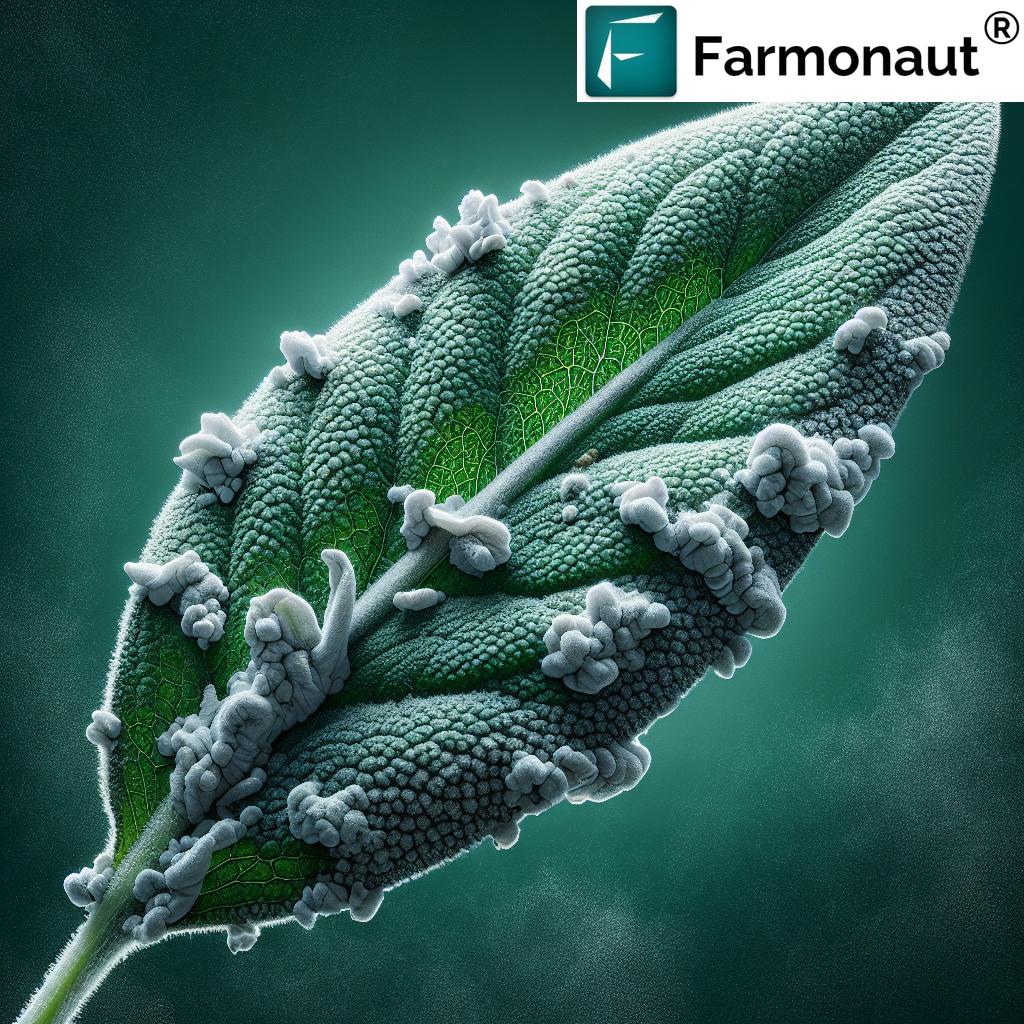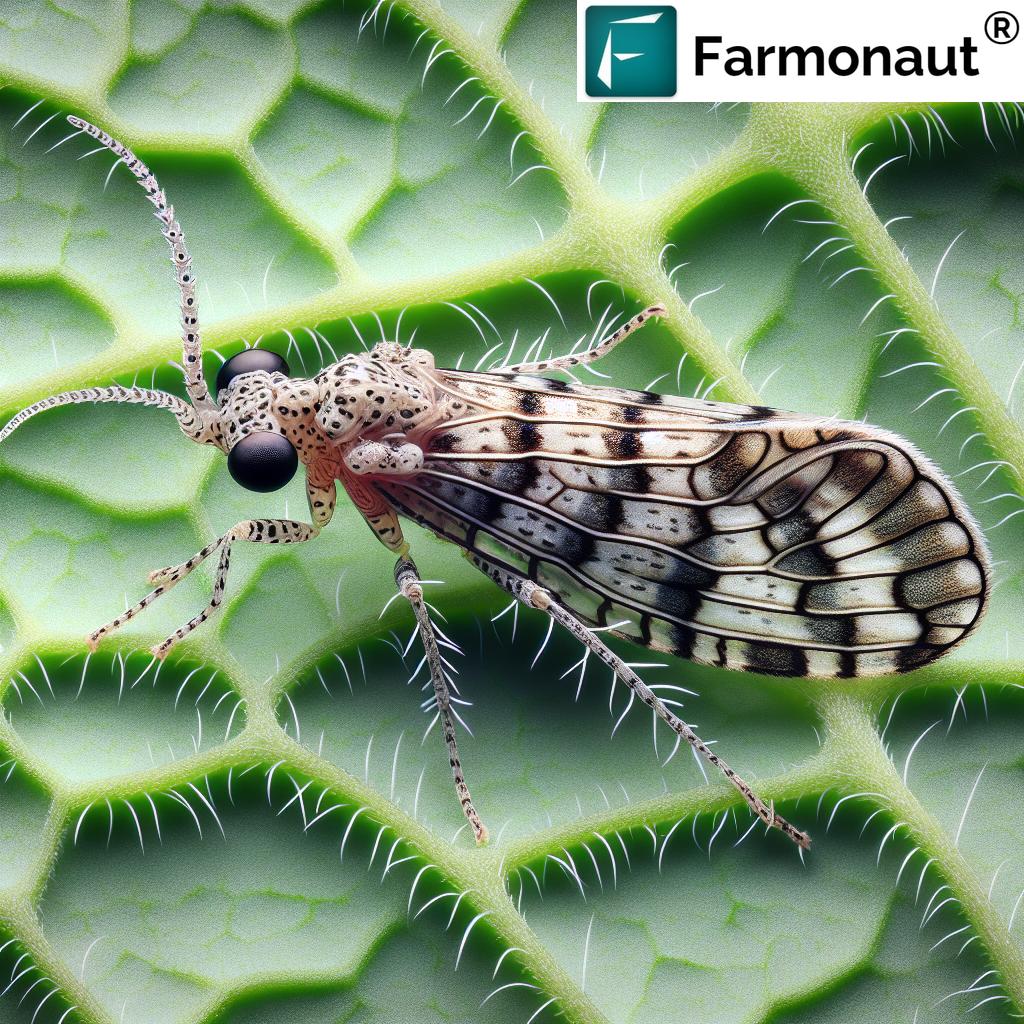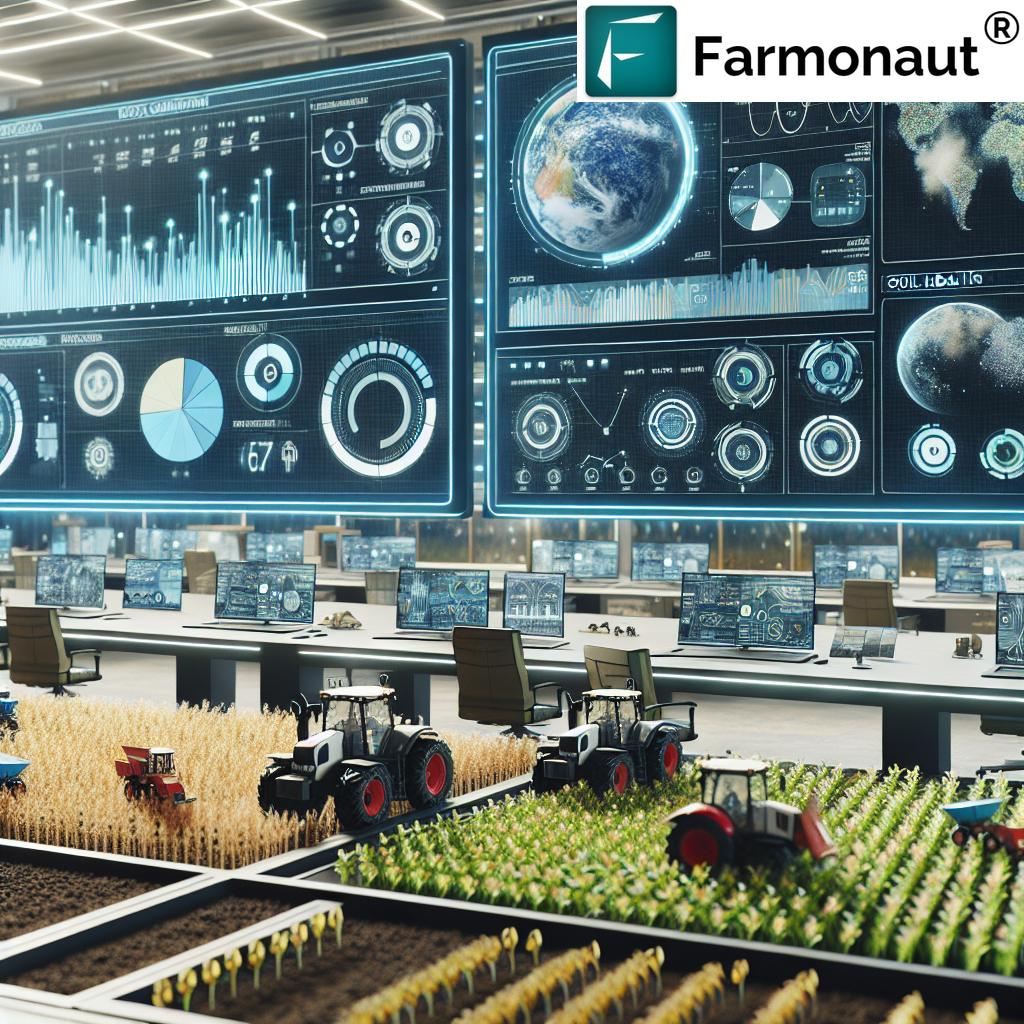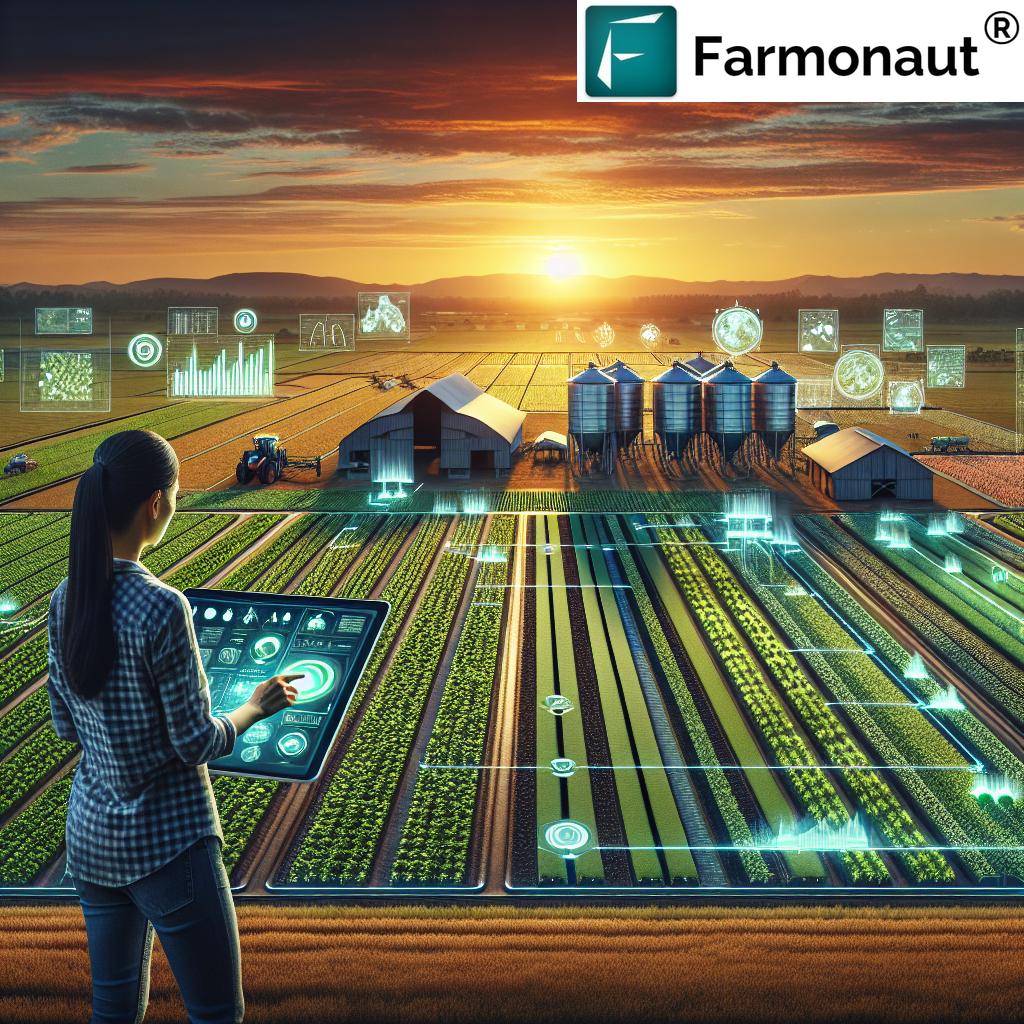Unlock Success: Smart Agriculture System Using IoT Now!
“Over 75% of farmers using smart sensors report improved crop monitoring accuracy with IoT-based agriculture systems.”
Introduction: Embracing Smart Agriculture System Using IoT
As we navigate an era marked by population growth, climate challenges, and increasing demand for food, the need for innovation in agriculture has never been more urgent. The integration of the Internet of Things (IoT) into agriculture—widely recognized as smart agriculture—has initiated a profound transformation. Through connected devices, real-time monitoring, advanced data analytics, and automated systems, we are witnessing improvements in efficiency, productivity, and sustainability. This revolution is not only enhancing traditional farming practices but is also creating new opportunities to optimize agricultural operations.
In this comprehensive guide, we explore how IoT in agriculture, smart farming technologies, and precision agriculture solutions are driving a new wave of innovation. We also showcase the mission of visionary companies such as Farmonaut to make these revolutionary technologies accessible and affordable for all farmers, regardless of scale or location.
How IoT Is Revolutionizing Agriculture
The journey from traditional to smart agriculture is defined by the adoption of IoT technology, which introduces a network of interconnected sensors, devices, and platforms. These enable farmers to access timely information on soil, crop health, moisture, pest activity, weather conditions, and more. By leveraging this wealth of data, we can:
- Optimize water and nutrient usage with large-scale farm management apps
- Reduce waste and minimize environmental impact
- Enhance yield through predictive analytics
- Boost efficiency and lower costs by automating resource allocation
- Enable real-time response to diseases, pests, and weather variability
- Support data-backed decisions for farm optimization and sustainable practices
- Bring transparency in the supply chain via digital traceability (learn more)
With IoT in agriculture, we are moving toward a future where every cycle of planting, irrigation, and harvesting is tailored for optimum performance and minimal resource wastage.
Key Components of Smart Agriculture Systems Using IoT
At the heart of smart farming technologies are several integrated components. These work in concert to deliver actionable insights that drive precision, efficiency, and sustainability across agricultural operations.
1. Sensors and Monitoring Devices
- Soil Moisture Sensors for Farming: Measure moisture levels deep within the soil to guide irrigation schedules and prevent under- or over-watering.
- Climate and Environmental Sensors: Track temperature, humidity, rainfall, ph, and nutrient content.
- Crop Health Monitoring Sensors: Evaluate growth stages, detect diseases and pest infestations.
- Livestock Monitoring Devices: Wearables or tags for real-time health and behavior monitoring in livestock.
2. Connectivity Infrastructure
- LPWAN (Low-Power Wide-Area Networks): Ideal for rural areas as they enable long-range, low-energy communication between devices.
- Cellular and Satellite Networks: Provide reliable connectivity for continuous data transmission between fields and centralized platforms.
3. Data Analytics Platforms
- Agriculture Data Analytics: Transform raw collected data into actionable insights, highlighting emerging issues and predicting trends.
- Cloud-Based Platforms: Centralized storage for real-time analysis and predictive guide recommendations.
4. Actuators and Automated Systems
- Automated Irrigation Systems: Trigger watering based on soil moisture data.
- Drones & Robotic Machinery: Execute tasks like planting, targeted fertilizer/pesticide application, and crop health monitoring.
Applications of IoT in Agriculture: From Crop to Supply Chain
-
Precision Farming:
- Apply water, fertilizers, and pesticides precisely where needed.
- Minimize waste and reduce negative environmental impact.
-
Smart Irrigation Systems:
- Automated irrigation guided by soil moisture sensors for farming, weather, and crop data.
- Real-time adjustment of watering schedules for water-saving and healthier crops.
-
Livestock Monitoring and Management:
- IoT devices track animal location, health, and behavior.
- Enable early detection of diseases and optimal feeding.
-
Crop Health and Pest Monitoring:
- Sensors and drones offering real-time crop monitoring.
- Rapid response to pest outbreaks or disease, reducing need for widespread chemicals.
-
Climate and Environmental Monitoring:
- Continuous assessment of temperature, humidity, rainfall, and climate impact.
- Improve planning of planting and harvesting schedules.
-
Supply Chain Traceability:
- Sensor data tracks produce from farm to table.
-
Digitally record quality parameters, storage conditions, and enhance chain transparency.
Read how blockchain traceability by Farmonaut empowers agricultural supply chains
Through these applications, agricultural IoT devices enable smart management at every step.
“Precision agriculture solutions can reduce water usage by up to 30% through real-time soil and weather data analysis.”
Farmonaut: Pioneering Affordable Precision Agriculture
While the promise of IoT in agriculture is vast, affordability and accessibility remain core challenges. This is where Farmonaut stands out as a leading innovator. Our platform is designed to break barriers—delivering advanced, data-driven precision agriculture solutions to all farmers globally, regardless of farm size, budget, or technological background.
Farmonaut’s Smart Agriculture Platform: Unlocking the IoT Edge
- Satellite-Based Crop Health Monitoring: Utilizing multispectral satellite imagery, our system continuously tracks vegetation health (NDVI), soil moisture levels, and critical crop health indicators.
- AI-Powered Advisory: Jeevn AI provides real-time, personalized guidance on irrigation, fertilizer usage, and pest management—enabling smarter decisions, lower costs, and higher yields.
- Blockchain-Based Traceability: Farmonaut’s network brings robust supply chain transparency—empowering consumers to trace the journey of produce securely from farm to shelf. Explore our Product Traceability Solutions.
-
Fleet & Resource Management: Tools for fleet management help optimize logistical tasks, minimizing operational waste and cost.
See how fleet management works for agricultural efficiency. -
Carbon Footprinting: Real-time emissions tracking for sustainable farming practices—helping agribusinesses monitor and lower environmental impact.
Reduce your farm’s carbon footprint today. -
API & App-Based Accessibility:
Our platform is available on Android, iOS, web browsers, and as an API—API link | Developer Docs
Farmonaut operates on a flexible subscription model, ensuring cost-effective, scalable solutions for everyone—from smallholders to corporate farms.
Access Jeevn AI for expert advisory, blockchain traceability for authentic provenance, and carbon tracking for sustainability—all within one easy platform.
Comparative Feature & Impact Table: IoT Applications in Smart Agriculture
| IoT Technology | Core Functionality | Estimated Cost (USD) (per acre/season) |
Key Benefits | Estimated Yield/ Resource Impact (%) |
|---|---|---|---|---|
| Soil Moisture Sensors for Farming | Measure and transmit soil moisture levels in real-time |
$10–$30 | Reduces over/under watering, optimizes irrigation schedules |
Water savings up to 30%; yield boost 10–15% |
| Automated Smart Irrigation Systems | Uses data to control irrigation systems and water delivery |
$50–$200 | Dramatically cuts water usage, labor savings, minimizes disease risk from overwatering |
Water savings 20–40%; labor reduction ~30% |
| Environmental & Weather Stations | Monitor local temperature, humidity, rainfall, and wind |
$200–$600 | Enables climate-smart decisions, early warning for extreme events |
Yield loss prevention 8–12%; climate risk reduction |
| Drone-Based Crop Health Monitoring | Capture multispectral images to detect disease, stress, pest infestations early |
$75–$200 (per monitoring flight) | Enables targeted interventions, reduces pesticide usage, early issue detection |
Pesticide reduction up to 25%; yield increase 12–18% |
| Blockchain Traceability Systems | Tracks crop journey through supply chain, ensures quality, provenance, and transparency |
$20–$50 | Prevents fraud, increases consumer trust, meets regulatory compliance |
Loss reduction 5–10%; higher market premium |
Smart Farming Technologies: Benefits & Impact
How IoT in Agriculture Drives Efficiency, Sustainability, and Productivity
- Increased Productivity: Utilizing agricultural IoT devices for real-time monitoring and decision-making leads to higher crop yields and more efficient operations.
- Cost Savings: Precision resource management reduces input costs and waste (water, fertilizer, labor).
- Sustainability: Efficient use of inputs, reduced chemical reliance, and climate adaptation lower the environmental impact of farming.
- Improved Decision-Making: Predictive analytics and instant insights enable targeted actions for both routine and emergency responses.
- Supply Chain Quality: Traceability fosters transparency, enabling verified, higher-value produce to reach consumers.
At Farmonaut, we prioritize sustainable farming practices through carbon footprint tracking and traceable crop journeys. Our large-scale farm management and fleet resource tools are designed for farmers and agribusinesses seeking maximum return with minimal environmental cost.
Learn more about Farmonaut’s Carbon Footprinting for agriculture businesses.
Challenges & Considerations in IoT Adoption for Agriculture
- Data Security & Privacy: Protecting farm data from breaches is vital. With connectivity comes responsibility—robust security protocols are a must to maintain privacy.
- Connectivity Issues: Many rural locations lag in network infrastructure, causing gaps in data transmission or delays in analysis.
- High Initial Investment: IoT device costs can be challenging for smallholder farmers, though platforms like Farmonaut lower this barrier significantly.
- Data Management: The massive amount of sensor and supply chain data requires robust, centralized platforms for efficient storage and analysis.
- Adoption & Training: Skill gaps remain a hurdle. Building digital literacy among the agriculture community is essential for scalable success.
Farmonaut helps mitigate these barriers by offering user-friendly mobile/web interfaces, affordable subscription plans, multi-language support, and comprehensive security features.
For crop loans and insurance verification, Farmonaut’s solution streamlines access for farmers, making financial inclusion smarter and faster.
Future Outlook: IoT in Agriculture & Smart Farming
The synergy of IoT, artificial intelligence, machine learning, and blockchain will further supercharge agricultural innovation. As technology costs decrease and interfaces become more intuitive, we expect:
- Broad adoption of smart farming technologies even in remote and underserved communities
- Tighter resource cycles, further minimizing waste and maximizing productivity
- Environmental sustainability tools becoming the norm (see Farmonaut Carbon Footprinting)
- Seamless integration of IoT devices with national policies and international traceability standards
- More resilient, adaptive agriculture systems able to respond to rapidly changing climate and market demands
Our mission at Farmonaut remains clear: to make precision agriculture solutions accessible for every farmer, every farm, everywhere.
FAQ: IoT in Smart Agriculture
What is IoT in agriculture?
IoT in agriculture refers to the application of interconnected sensors, devices, and platforms that collect, transmit, and analyze real-time data from fields, livestock, and equipment to enable data-driven agricultural decisions and automation.
What are popular smart farming technologies?
Leading smart farming technologies include soil moisture and environmental sensors, automated irrigation and fertilization systems, drone-based crop health monitoring, fleet/resource management apps, and blockchain traceability.
How do soil moisture sensors benefit farming?
Soil moisture sensors for farming guide precise irrigation by sending data on moisture levels to cloud analytics platforms, optimizing watering schedules and reducing water wastage for healthier crops.
Can IoT platforms help small and medium farmers?
Absolutely! Platforms such as Farmonaut make precision agriculture affordable and user-friendly even for smallholders, with satellite-derived insights and cost-effective subscription plans.
What are the sustainability benefits of smart agriculture?
Sustainable farming practices leverage IoT to minimize input use, reduce chemical run-off, optimize resource use, and track environmental impact via carbon footprint monitoring.
Subscribe: Farmonaut Affordable IoT Solutions
Ready to harness the power of IoT in agriculture? Choose a Farmonaut subscription—flexible packages for individual farmers, cooperatives, or large agribusinesses.
Conclusion: Unlocking Success with Smart Agriculture System Using IoT
The integration of IoT into agriculture has opened a new frontier for efficiency, productivity, and environmental stewardship. By uniting sensors, cloud analytics, and automated systems, we empower farmers to make timely, informed decisions, optimize resource usage, and sustainably increase yields.
Farmonaut stands as your trusted ally—delivering affordable, accessible, and innovative precision agriculture solutions leveraging the power of satellite, AI, and blockchain technologies. Our tools are designed to fit the unique needs of every stakeholder in the agricultural value chain—from single fields to global supply networks.
- Use Farmonaut’s mobile, web, and API platforms for real-time crop monitoring and resource optimization.
- Reduce environmental impact and meet carbon targets through our carbon footprint tracking tools.
- Ensure transparency and trust in your supply chain with blockchain-based traceability solutions.
- Streamline operations, cut costs, and boost productivity using fleet & resource management.
- Simplify crop loan and insurance procedures with satellite-based verification.
By embracing IoT in agriculture, we collectively take a bold step toward feeding the world—responsibly, efficiently, and sustainably. The future of smart farming is here—unlock your success, today.


